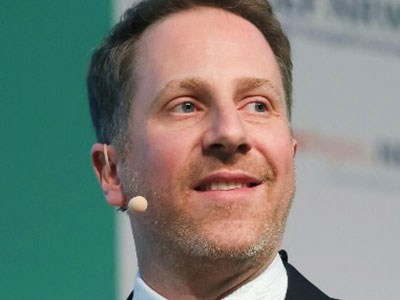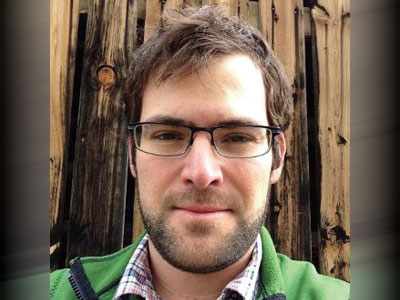The U.S. power grid is millions of miles long, contains countless pieces of equipment, serves nearly 230 million people and is magnificently deficient in upkeep. Analysts are engaged in multitrillion-dollar debate whether the grid needs rebuilding or replacement. And every day, new power sources are coming online that need to be incorporated into the grid – many of them renewables like wind and solar, never envisioned as becoming a “democratized” feature of the power grid. But now one thing is a certain, the power grid needs attention and it will be costly, the largest project and likely most expensive “project” in U.S. history.
Fixing America’s power grid is a monumentally difficult and expensive task. Three years back, Joshua Rhodes, a researcher at University of Texas, Austin’s Webber Energy Group, estimated a complete grid replacement would cost nearly $5 trillion. “I’m sure it would be more now,” Rhodes recently said.

The grid is comprised of three parts: generation, transmission and distribution. Transmission and distribution lines, many of which have passed their life expectancy, are already operating at capacity. Transformers are failing. Hundreds of the aged and uneconomic plants that generate power must be replaced.
Add to this an overall deficiency in the grid’s maintenance. That’s become especially apparent in particular pockets. However, the entire country suffers. “There is a need to invest and create infrastructure just to keep [the US grid] up and keep it going,” said Florian Mayr, a Berlin-based partner at Apricum— The Cleantech Advisory.

Complicating matters, the US has three separate grids — Eastern, Western and Texas — that aren’t even connected. Rick Rys, a senior consultant who specializes in energy management with ARC Advisory Group, calls this “ridiculous for a modern country.”
In 2017, the American Society of Civil Engineers released a “report card” on US infrastructure, in which it slammed the state of the country’s power grid. “Electricity delivery in the US depends on an aging and complex patchwork system of power generation facilities, transmission and distribution grids, local distribution lines, and substations,” the report said. It awarded energy infrastructure a dismal “D+.”
It’s getting worse.
State of the Grid
Recent events in California provide dramatic warning signs of what could happen if nothing is done. In the past two years, extreme weather triggered blackouts, a downed power line ignited one enormously deadly fire and the mere danger of wildfires caused a major utility to cut power to millions (see box on page 4). Utilities these days are scrambling to keep their lines and equipment safe from the fires that are now ravaging the West.
“Utilities are already more vulnerable to extreme weather events than in the past,” wrote McKinsey & Co. in a report last year calling for utilities to adapt to new environmental realities.
It’s not just utilities. It’s vital for those in logistics to understand what could be a seismic shift in the grid and the various components involved. Building a new grid — or even upgrading the current one — will impact vessels and the ports, rail and road, cargo handlers and 3PLs. New equipment, new handling methods, new transport solutions will all be required. Power, which already plays a major role in project cargo, will become ever more important.
Everyone with an interest in project cargo should be aware of the state of the grid and what changes are on the horizon. Billions of dollars will be at stake.
“People gloss over the massive amount of logistics required if you go from having dozens of power plants to tens of thousands of power plants,” said Rhodes in an interview, “the managing all of that, upgrading the distribution system to handle that, upgrading the transmission system to handle all that. It is a lot.”
A modern grid becomes ever more vital as we attempt to move away from polluting energy sources, embracing everything from electric vehicles to rooftop solar panels. “As electricity consumption is growing through electrification efforts, there is going to be a need for more robust transmission and distribution infrastructure,” said Eric Wanless, director of technology and innovation at the Rockefeller Foundation, where he focuses on the power industry.

Large, renewable energy projects have already been identified as important drivers in a global economic recovery following the Covid pandemic. And the shift is underway – GE the largest builder of coal fired plants, announced last week that it will no longer build coal fired plants and shutter or sell existing facilities to concentrate on renewables. With a change like this, project cargo specialists should anticipate a significant upturn in business.
Points of Improvement
Despite its crumbling infrastructure, the grid displays some points of improvement. Advanced software systems, for example, can now more accurately monitor equipment wear and tear, better match supply and demand and more precisely control usage. Utilities are already devouring these systems. “The more fundamental change is on the software and controls basis,” said Wanless. “It’s already happening. You just don’t know it,” said Wanless.
“Our grid is getting smarter, but it has a long way to go,” added Rys. “Homes are getting smarter, but they have a long way to go. And the grid interactive home doesn’t exist yet.”
Although there’s universal agreement that a better grid is a much smarter one, it’s less certain exactly what shape a new power grid would take. Among those who see the basic outlines the same way, important details differ. For example, some maintain that highly localized power production and consumption will become vital, while others believe this so-called “micro grid” will remain of marginal importance.
Then, there’s politics. “The whole marketplace is a political battle in terms of government and rules and regulations and tax law skewing which source of energy is going to win,” said Rys.
Even advocates of a complete grid transformation don’t see some sort of magic switch being thrown. It’s not as if the old grid will one day be shut down and a new one powered up. Too much is at stake. “You don’t want to invest billions of dollars on the grid maintenance and then have it not actually work for a future that we’re moving toward,” said Wanless. “It’s not two pots of money.”
It will take time. “This is not an easy infrastructure to change,” said Rys. “Many of these products take a decade to build.”
Analysts have identified several elements of a new grid. Here are eight:
1. A smart grid. The grid itself becomes a more active player, and at every juncture. Information becomes increasingly more detailed and actionable, making both production and consumption more efficient. “Data can be just as valuable as the energy that’s flowing across the lines,” said Rhodes.
2. A two-way grid. Customers will produce energy as well as consume it. (They are known in industry jargon as “prosumers.”) Homes, vehicles, offices, schools, shops and factories will all become sources of power, with both electricity and data flowing back and forth. Mayr calls this the “democratization of generation.”
“There will be two-way flows of information, two-way flows of power. It will be a much more integrated systems approach to the power grid, which is a fundamental shift from the power grid of today, which really is the same grid of 100, 120 years ago,” said Wanless.
3. A distributed grid. Power will be increasingly decentralized or distributed, rather than the traditional model, which is a centralized system of generation, storage and distribution. Andrew Meyer, a Southern California clean energy advocate, talks of six advantages: Efficiency, reliability, modularity, flexibility, economy and environmental responsibility.
Customers have a greater role in not only consuming, but in generating and trading electricity. The relationships between consumption, production, and storage become redefined, according to the equipment manufacturer Siemens.
4. Behind the meter. These are customer-generated energy resources, rather than utilities. It includes the obvious, such as rooftop solar panels and batteries, and the not-so-obvious, including electric vehicles and smart thermometers.
5. Renewable energy. Solar, wind and hydro will account for a larger and larger percentage of total power and some analysts such as Rhodes believe renewable energy will account for 40% to 50% of total in another 15 to 20 years. Not only is it environmentally necessary, it’s now the cheapest source of power in many areas and will become more and more economical as time goes on. (California, for example, already depends on renewables for one-third of its energy consumption and pledges to be 100% carbon-free by 2045.)
“A clean energy portfolio is cheaper to build today than certainly coal and in a lot of cases, new natural gas plants,” said Wanless, who predicts this kind of cost advantage will only grow in time. “This has been like a relatively huge paradigm shift in the power sector.”
6. Batteries. They will be a key component for much of the change, especially as the price of lithium-ion batteries is falling dramatically, although other battery technology is being developed as well. Some batteries will allow residences and businesses — as well as vehicles — to store power. Others, called grid-scale batteries, provide onsite storage for power production. The issue for the grid is energy variability. The sun doesn’t shine at night. Wind doesn’t blow all day long. “With renewables, there’s much more fluctuation,” said Mayr, who adds that energy storage enables “flexibility in the grid.”
7. Smaller power plants, and many more of them. The days of the mammoth 1GW power plant lording over a city are over. The size of one plant isn’t key, overall production is. “The size of power plants recently has shrunk, and technology has also allowed them to do that,” said Rhodes.
This, however, means a greater emphasis must be placed on more efficient power transmission, both locally and over long distances.
8. Microgrids. Shrink power generation, transmission and usage down to a neighborhood or a single complex of buildings, such as a university. That’s the concept behind a microgrid, which is usually connected to the main grid, but can disconnect and function independently through an autonomous power source. This is called “islanding.” Ports of Long Beach, LA and San Diego have microgrid projects underway while the Port of Baltimore is studying the concept. Some microgrids are already operating, although there’s some skepticism that they can be widely used. “People romanticize the idea of locally produced power, just like they romanticize the idea of locally produced food,” said Rhodes. “It‘s a lot harder when it’s 100 degrees outside and you and all of your neighbors want air conditioning.”
Impact of Grid Transformation
The grid’s transformation will impact logistics handlers in sometimes contradictory ways. For example, as AJOT has written about extensively, wind turbines are becoming ever more powerful, which means they’re larger and heavier. Transportation and handling become proportionately more challenging. For Instance, LM Wind has developed a blade that reaches 107 meters in length [ 351 feet].
Offshore wind can be especially difficult, with purpose-built vessels and advanced handling techniques. In July, for example, the Dutch subsea cable installer, Blue Offshore, fashioned a unique “double basket” carrousel barge to move 8,000 tons of cables from the manufacturing site in Greece to Rotterdam.
On the other hand, both batteries and solar panels are modular. They are built to be containerized. An array of photovoltaic cells stands in stark contrast to a coal plant.
As power is decentralized and distributed, the physical attributes of the grid change. “You need less grid infrastructure and you also need less centralized power generation,” said Mayr.
On the other hand, ultra-high voltage power lines can more efficiently send electricity from, say, a rural source to a population center hundreds of miles away. One $6 billion project in China, completed last year, constructed a 1,100-kV (1.1 million volts) direct-current line that stretches more than 2,000 miles. Transformers weigh 800 metric tons each and are 37 meters long (121 feet).
Finally, just keeping the old grid working is a tall order. Rhodes calls it “a trillion-dollar problem,” adding, “even if the grid stays the exact same as it is today, just on maintenance, we’re going to be spending trillions of dollars.”



